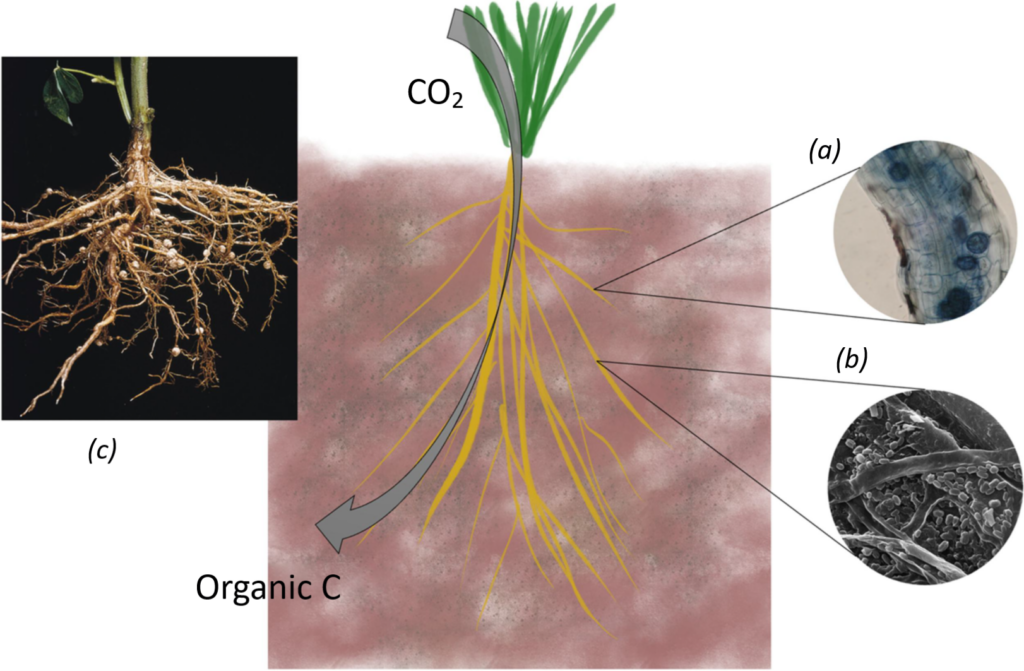Publication alert – Growing soil organic carbon in dryland agricultural systems
https://doi.org/10.1071/MA23005

Conceptual diagram of carbon flow from the atmosphere by the plant to the soil.
Photosynthesis fixes atmospheric CO2, which then enters the soil by above- and below-ground litter and rhizodeposits. Symbiotic fungi such as mycorrhizae (a), plant growth promoting rhizobacteria
(b) or, in the case of legumes, rhizobia (c) modulate plant C inputs to the soil by facilitating greater root exploration, N2 fixation, greater plant productivity and, especially in the case of mycorrhizae, the deposition of their own necromass.
Soil organic carbon (SOC) is an important factor of soil fertility and its ability to sustain agricultural plant growth. In dryland agricultural systems, SOC plays a crucial role in improving resilience, productivity and delivering a range of ecosystem services including carbon sequestration and broader ecosystem health. The primary source of carbon into the soil is through the net primary production (NPP) i.e., the net gain of carbon from photosynthesis minus the losses through respiration per land area unit. NPP is highest in areas where there are ideal photosynthetic conditions; abundant sunlight, warmth and rainfall, and is lower in dryland regions (~45% of global land area) where many crops are grown in Australia.
Plant–microbe interactions can help increase NPP and stimulate plant carbon inputs to the soil through a variety of mechanisms. Additionally, the soil microbial community plays a crucial role in the loss (CO2 respiration) and stabilisation of SOC (ability to retain carbon in the soil). With improved understanding of soil microbiomes and plant–microbe interactions, there are new emerging strategies in which microorganisms may be harnessed either directly or indirectly to increase the amount of carbon added and stabilised in dryland soils.
Read the full research article here – Microbiology Australia 44(1) 18-21.
Authors – Mark Farrell and Gupta Vadakattu
See more research on how harnessing microbes are benefiting agricultural plant health here:
